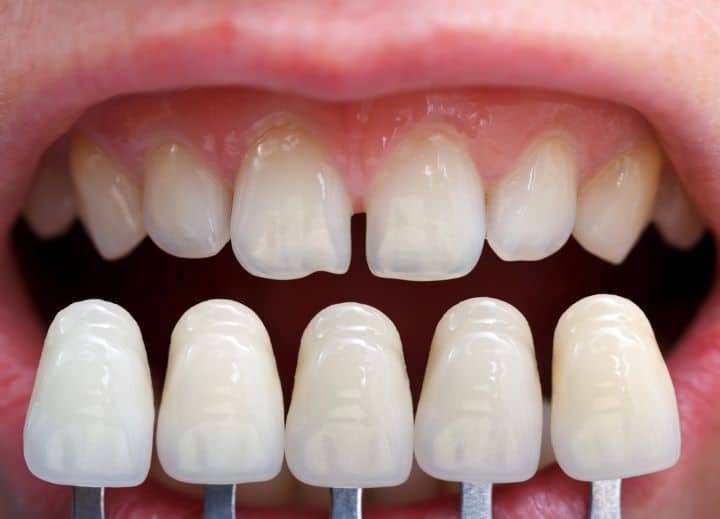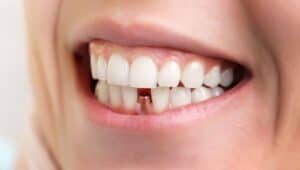Braces are now becoming a hot topic among adults.
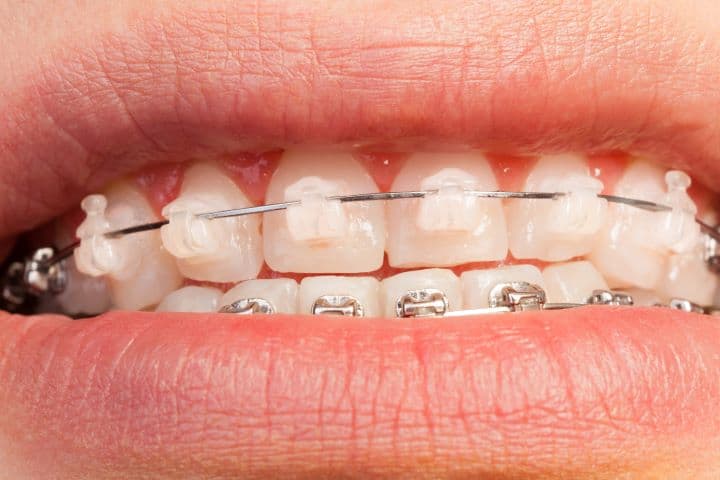
According to data provided by the American Association of Orthodontists (AAO), currently, 32% of patients receiving orthodontic treatment in the U.S. and Canada are adults.
Furthermore, the adult population of patients has increased by more than 40% in the last decade.
A brief overview of dental braces
Dental braces are devices made out of an array of materials that can straighten the teeth over any given point of time with firm and consistent force or pressure.
They are typically chosen in cases where the patient is dealing with orthodontic issues that hinder their quality of life. These can range from small uneven spaces between the teeth to major bite issues that can even have skeletal involvement.
Braces for adults: Do adults need braces?
With the gradual destigmatization of braces treatment for adults, more and more adult patients are seeking corrective treatment for their malaligned teeth.
The goal is to have an idyllic set of straight teeth. Adults not only opt for braces due to their visually compelling gains but also due to crooked, crowded, or gapped teeth.
Different types of braces
When someone brings up braces in a conversation you immediately think of the clunky wire-and-band set that frames adolescent smiles, however, that is no longer the case.
Traditionally yes, braces were uncomfortable metal devices that adorned the front surfaces of the teeth.
However, due to many advancements in orthodontics in the last few decades, there are many treatment options for adults other than conventional braces.
There are many types of options available in the market today.
However, note that the type of braces varies from person to person depending on the complexity of their malocclusion, individual preference, and lifestyle choices that can dictate the device choice.
Traditional metal braces
Traditional braces are your typical run-off-the-mill braces. These braces have brackets and wires that attach to secure the teeth in place.

These metal systems are bonded to the front of the teeth with special dental cement, which also means that these braces aren’t removable, but instead fixed in place.
Since these are the oldest form of braces treatment available, they are extremely reliable in treating mild to complex malocclusion problems in young kids, teens, or adults. However, they may not present a cosmetic appeal to some due to all the metal.
Lingual braces
Like traditional braces, lingual braces are fixed to the teeth with dental cement.
The only catch is that they are attached to the inner side of the teeth (near the tongue, therefore, called lingual braces) extending to the back of your teeth in some cases.
The inner attachments make lingual braces virtually invisible to others and are a popular go-to choice for patients who want the benefits of braces without being seen wearing them. They can also treat a diverse range of teeth problems.
Ceramic braces
Ceramic braces, also known as clear braces, are an interesting addition to the braces family.
While they work similarly to their metal counterparts, these braces are made of clear or tooth-colored materials. This makes them much less noticeable and earns a thumbs-up from many working adults.
They still consist of brackets, wires, and elastic bands to help move the teeth into their desired ideal positions. Unfortunately, they’re more fragile than metal braces, so may be prone to breaking.
Self-ligating braces
The look and feel of self-ligating braces are almost identical to traditional metal braces.

But the major difference between the two is that the former use a built-in system to hold the archwire and the teeth into place, instead of the latter’s ligature (elastic band) system.
These braces are designed to stimulate efficient movement of the teeth by reducing friction.
They can also be made of clear materials, which is becoming an increasingly popular option among adults.
Clear aligners or Invisalign
Arguably, the most popular modern-day alternative to braces as you know is the clear aligners. These braces are made of specialized plastic and come in a series of 22-35 aligner trays. Each tray is worn for two weeks, after which the set is renewed.
The plastic trays help gradually push the teeth into their new positions. They are also extremely versatile in their functionality, correcting mild to moderate dental issues.
An increased number of adults opt for this clear option of braces to improve oral hygiene and most importantly, due to its aesthetics.
Since this is the only removable option, the wear regimen for these braces consists of a strict and tight schedule for optimal outcomes.
Details on the orthodontic treatment process
Eligibility for adult orthodontic treatment
While it is never too late to go for orthodontic correction, an ideal time for the placement of braces is between 10 and 14 years of age, when the head and mouth are still in their growing stages.
However, braces for adults are just as effective as childhood braces.
Braces may be recommended for a wide variety of different conditions, especially for adult patients. The style of braces may also differ based on an individual’s unique needs.
Dental problems
Braces for adults are ideal if you have any of these common dental problems:
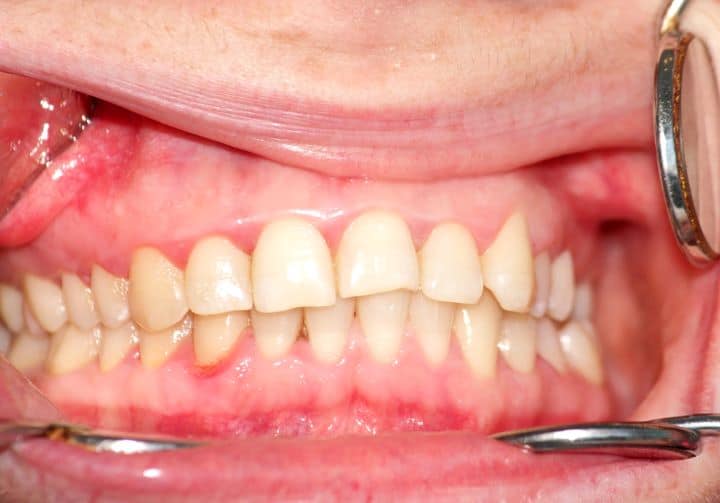
- Crooked teeth & Teeth crowding: It is when there isn’t enough space for your teeth to erupt at their anticipated positions.
- Over or underbites: It is when your lower teeth stick over your upper teeth (underbite) or if your upper teeth stick over your lower teeth (overbite).
- Open bites: It is when your upper and lower front teeth do not meet.
- Crossbites: It is when your upper teeth and lower teeth do not come together in a proper bite position.
- Uneven gaps between teeth: It is when you do not have much space between teeth resulting in crooked teeth.
- Unmatched midline: It is when the midline of your upper front two teeth does not align with the lower front two teeth.
- Misaligned jaw: It occurs when your malformed jaw prevents your upper and lower teeth from touching while closing your mouth.
- Other forms of misaligned teeth
Dental Health
While oral problems like gum disease or tooth decay do not rule out your ability to receive braces, they can significantly hinder the smooth progression of your treatment process.
Gum disease can lead to the destruction of gum tissue, ligaments, and bone which are needed to help anchor your teeth into their places.
During braces treatment, your teeth need to move through the bone to get to their newly appointed positions.
If you experience loss of bone and ligament due to gum disease, there may not be any healthy tissue to hold your teeth in their places.
Similarly, if your teeth succumb to decay, this can threaten your desired outcomes.
How do braces work?
Braces, once fitted, straighten your teeth by applying mild and constant pressure to your teeth. This pressure helps guide your teeth into their proper positions over time.
The braces that keep your teeth in place require periodic adjustments to adapt to the new position changes until the desired alignment is finally achieved.
How long do adults get braces?
The duration of braces depends on the type of braces you choose. On average, traditional adult braces take anywhere between 1 and 3 years to achieve results.
Clear-type aligners, on the other hand, can take as short as 3 months or as long as 22 months to complete.
Are adult braces for you?
If you don’t have tooth decay and gum disease, you’re probably safe to get braces as adults.
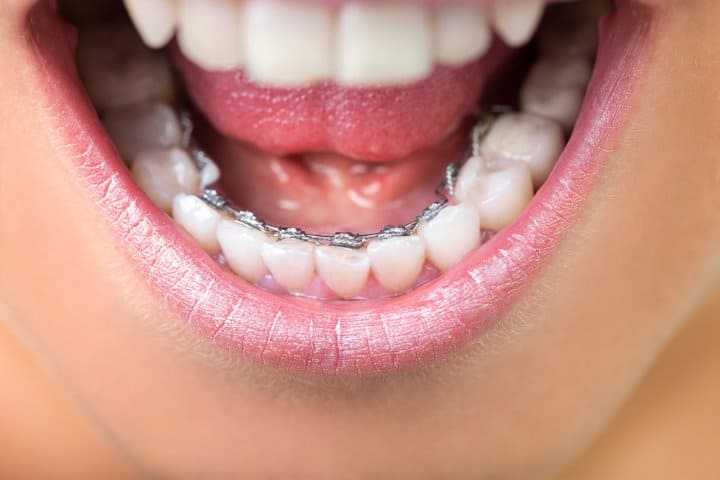
The exact type of braces you will receive will be dependent on multiple aforementioned factors, so consulting your dentist is crucial to understanding your options.
How much do adult braces cost?
Depending on the type of braces you are going for, you will receive a different quote on the price of the treatment. Metal braces go between $3,000 and $7,000.
The ceramic or lingual options can vary between $4,000 and $8,000. Your clear options like Invisalign are similar to traditional ones, costing between $4,000 and $7,400.
Today, dental insurance may also help manage orthodontic treatment costs. You should check with your insurance to browse dental plans that fit within your budget.
Why you should get braces as an adult
Adults seek braces for a myriad of reasons, whether it is to elevate their smiles for pictures or to cultivate a better impression for more job or dating opportunities. Braces are an incredible choice for you. Here’s why-
Benefits of adult braces
There are a ton of benefits of braces for adults such as:
- Enhance your appearance: Braces help perfectly align your teeth, giving your smile an elevated touch.
- Increased self-esteem: Individuals with straight teeth are more likely to be confident. This braces-gifted confidence then translates to more relationship successes and professional opportunities.
- Swift results: Braces such as the self-ligating kind or Invisalign help push teeth into their desired positions quicker than other braces.
- Increased comfort: While metal-enforced braces are not as comfortable as you’d like them to be, some other kinds like plastic braces are much more comfortable to wear.
- Easy to maintain: Without elastic bands, braces like the clear or self-ligating kinds are low maintenance. Not only can you enjoy fewer visits to the doctor’s but you can also ensure that your oral health is always good as adults with these braces.
- Less visible: Self-ligating and clear braces are made of clear dental materials, making them less visible than metal braces.
- Wide variety to choose from: If you aren’t too keen on getting hefty metal appendages glued to your teeth, you can choose any of the other braces options to straighten your teeth.
- Straight teeth are easier to manage: Everyone would prefer having straight teeth over crooked ones. You can eat any food you like without getting it stuck between your crooked teeth.
- Prevent further hassle: Getting braces right now means you can reduce the cost of future dental appointments.
Cost of braces
Braces do not have to cost an arm and a leg anymore.
Most insurance covers braces for adults today and you can even pay for braces in monthly installments. To determine your insurance coverage, contact your insurance provider.
Contact your orthodontist or dentist
Today, braces for adults are common, and a big percentage the orthodontic patients are adults.
The type of braces you choose will determine the outcome you receive. To understand further about this subject, contact your dentist.

